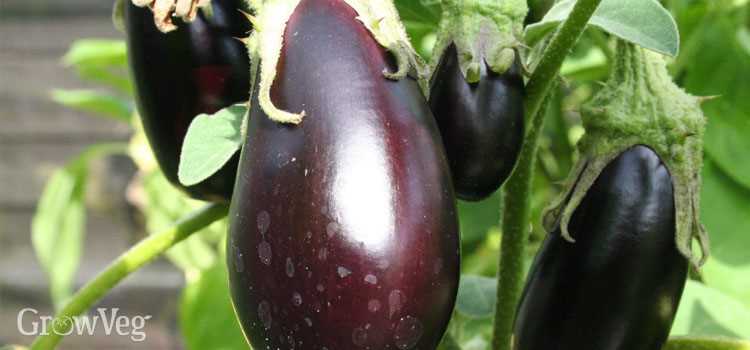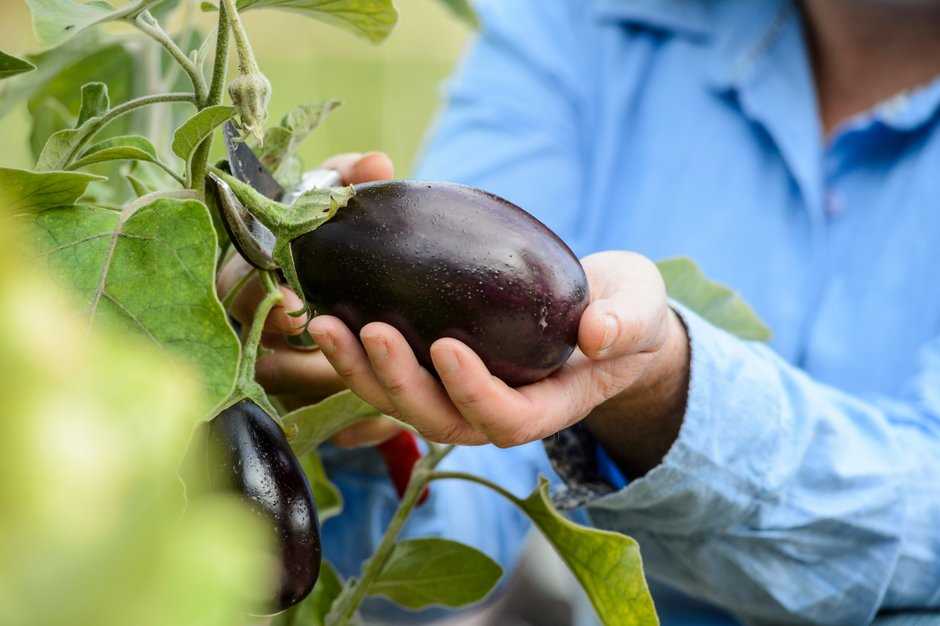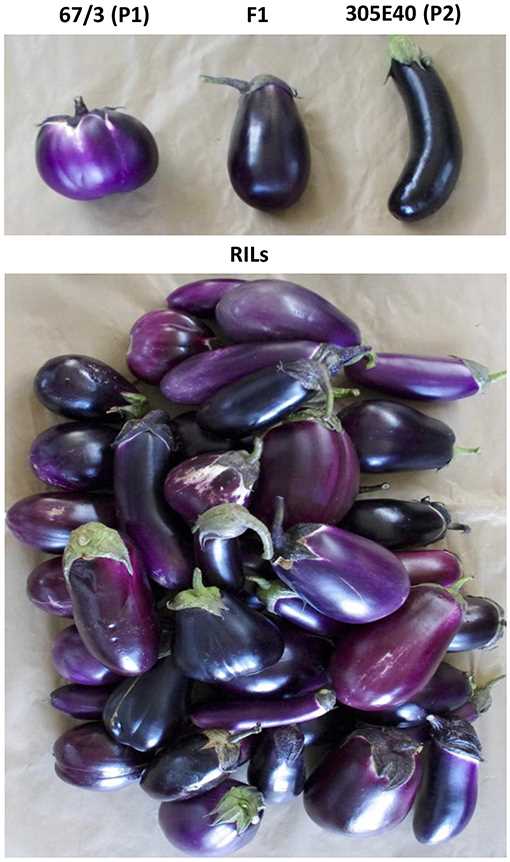- Starting with the Basics
- 1. Choosing the Right Variety
- 2. Starting Seeds Indoors
- 3. Transplanting Seedlings
- 4. Providing Proper Care
- 5. Protecting from Pests and Diseases
- 6. Harvesting and Storage
- Choosing the Right Variety
- Determining Factors
- Popular Aubergine Varieties
- Preparing the Soil
- 1. Choose the Right Location
- 2. Clear the Area
- 3. Test the Soil
- 4. Amend the Soil
- 5. Loosen the Soil
- 6. Mulch the Soil
- 7. Water the Soil
- Sowing the Seeds
- Caring for Your Plants
- Dealing with Common Pests
- 1. Aphids
- 2. Whiteflies
- 3. Tomato hornworms
- 4. Slugs and snails
- 5. Beetles
- Harvesting and Storing
- 1. Determining Harvest Time
- 2. Using a Knife or Pruning Shears
- 3. Harvesting Frequently
- 4. Handling with Care
- 5. Storing Aubergines
- 6. Avoid Washing Before Storage
- 7. Using within a Week
- 8. Freezing for Long-Term Storage
- 9. Preserving and Pickling
- “Question-Answer”
- What are some tips for growing aubergines without using chemicals?
- What is the best time to start growing aubergines?
- What kind of soil do aubergines prefer?
- Do aubergines need a lot of sunlight?
- How often should aubergines be watered?
- What are some common pests and diseases that can affect aubergines?
- How long does it take for aubergines to mature?
- “Video” Our Secret To Growing Eggplant! How To Grow Aubergine
Aubergines, also known as eggplants, are a popular and versatile vegetable that can be grown in your own backyard. Whether you’re a seasoned gardener or just starting out, growing aubergines can be a rewarding experience. In this article, we’ll cover everything you need to know about growing aubergines, from preparing the soil to harvesting large, healthy fruits. And the best part? You can do it all without the use of harmful chemicals!
First and foremost, it’s important to choose the right variety of aubergine for your growing conditions. There are many different types, ranging in size, shape, and color. Some popular varieties include “Black Beauty,” “Ichiban,” and “Rosa Bianca.” Consider factors such as the length of your growing season, average temperatures, and sunlight availability when selecting your aubergine variety.
Once you’ve selected your variety, it’s time to prepare the soil. Aubergines thrive in well-draining, fertile soil with a pH level between 5.5 and 7.0. Start by removing any weeds or debris from the area where you’ll be planting your aubergines. Then, work in organic matter such as compost or well-rotted manure to improve the soil’s fertility and structure.
When it comes to planting aubergines, timing is everything. These warm-season plants should be started indoors 8-12 weeks before your last frost date. Sow the seeds in seed trays or small pots filled with good quality potting mix. Keep the soil consistently moist and provide ample sunlight or artificial light for optimal growth. Once the seedlings have developed a few sets of leaves and the threat of frost has passed, they can be transplanted into the garden.
Caring for your aubergine plants is essential for a successful harvest. Regular watering, about 1 inch per week, is crucial, especially during dry spells. Mulching around the base of the plants can help retain moisture and suppress weeds. Additionally, aubergines benefit from regular feeding with organic fertilizers, such as compost tea or seaweed extract, to ensure healthy growth and fruit development.
Harvesting aubergines can be a bit tricky, as optimal ripeness varies depending on the variety. Generally, aubergines are harvested when they reach their full size and have a glossy, firm skin. To harvest, use a sharp knife or shears to cut the fruit from the plant, leaving a short stem attached. Handle the aubergines carefully to avoid bruising.
By following these time-tested tips, you can successfully grow aubergines and enjoy large, flavorful fruits without the need for harmful chemicals. So why not give it a try and experience the joy of harvesting your own homegrown aubergines?
Starting with the Basics
Before you start growing aubergines, it’s important to understand the basics. Here are some key points to keep in mind:
1. Choosing the Right Variety
There are many different varieties of aubergines available, each with its own characteristics. Choose a variety that is well-suited to your climate and growing conditions. Some popular varieties include:
- Epic F1
- Black Beauty
- Ichiban
2. Starting Seeds Indoors
Aubergines are typically started from seeds indoors. Start the seeds about 8-10 weeks before the last frost date in your area. Plant the seeds in pots or seed trays filled with a well-draining seed starting mix. Keep the soil consistently moist and provide plenty of light.
3. Transplanting Seedlings
Once the seedlings have developed several leaves and are about 6-8 inches tall, they are ready to be transplanted into larger pots or directly into the garden. Choose a sunny spot with rich, well-draining soil for planting.
4. Providing Proper Care
Aubergines require regular watering, but be careful not to overwater as this can cause root rot. Provide support for the plants as they grow, using stakes or cages to prevent them from falling over. Apply a balanced fertilizer every 4-6 weeks to promote healthy growth.
5. Protecting from Pests and Diseases
Aubergines are susceptible to a variety of pests and diseases, including aphids, flea beetles, and fungal diseases. Keep a close eye on your plants and take action at the first sign of trouble. Use organic pest control methods or consult with a local gardening expert for advice.
6. Harvesting and Storage

Aubergines are ready to harvest when they have reached their mature size and have a glossy skin. Use sharp scissors or a knife to cut the fruit from the plant, taking care not to damage the stem. Store aubergines in a cool, dry place or refrigerate them for up to a week.
By following these basic guidelines, you can get started on growing your own healthy and delicious aubergines. Good luck!
Choosing the Right Variety
When it comes to growing aubergines, one of the most important factors to consider is choosing the right variety. There are numerous varieties of aubergines available, each with its own characteristics and growing requirements.
Determining Factors
Here are some factors to consider when choosing the right variety of aubergine:
- Climate: Different varieties have different tolerance levels to temperature, humidity, and sunlight. Choose a variety that is well-suited to your local climate.
- Growth Habit: Aubergines can have different growth habits, such as bushy or vining. Consider the space you have available and whether you want to grow them in containers or in the ground.
- Days to Maturity: The time it takes for an aubergine variety to mature can vary. If you have a short growing season, choose a variety with a shorter time to maturity.
- Size and Shape: Aubergine varieties can vary in size, shape, and color. Decide what size and shape you prefer and choose a variety accordingly.
- Taste and Texture: Different varieties can have different flavors and textures. Some may be more bitter while others are sweeter. Consider your personal preferences.
Popular Aubergine Varieties
Here are some popular aubergine varieties that are known for their excellent flavor and high yields:
| Variety | Description |
|---|---|
| Black Beauty | A classic variety with glossy, dark purple skin and a delicious flavor. |
| Long Purple | An elongated variety with dark purple skin and a mild, sweet flavor. |
| Japanese White Egg | A small, oval-shaped variety with white skin and a delicate flavor. |
| Moneymaker | A productive variety with large, round, purple fruits and a meaty texture. |
These are just a few examples, and there are many more varieties to choose from. Do some research, read reviews, and consider your own preferences to find the aubergine variety that suits you best.
Preparing the Soil
Before planting your aubergines, it is essential to prepare the soil properly to provide them with the nutrients they need to grow and thrive. Here are some steps to follow for soil preparation:
1. Choose the Right Location
Select a sunny spot in your garden where the aubergines will receive at least 6-8 hours of direct sunlight per day. Ensure that the location has good drainage to prevent waterlogging, which can cause root rot.
2. Clear the Area

Remove any weeds, rocks, or debris from the planting area. This will help prevent competition for nutrients and ensure that the aubergines have a clean growing environment.
3. Test the Soil
Test the soil pH and nutrient levels to determine its composition. Aubergines prefer slightly acidic soil with a pH range of 5.5-7.0. If the soil pH is too high, you may need to add amendments like sulfur to lower it.
4. Amend the Soil
Based on the soil test results, you may need to amend the soil with organic matter or fertilizers to enrich its nutrient content. Add well-rotted compost, aged manure, or organic fertilizers to improve the soil’s fertility and structure.
5. Loosen the Soil
Use a garden fork or tiller to loosen the soil to a depth of at least 12 inches. This will improve aeration and root penetration, allowing the aubergines to establish themselves more easily.
6. Mulch the Soil

Apply a layer of organic mulch, such as straw or wood chips, to help retain moisture, suppress weed growth, and regulate soil temperature. Mulching also adds organic matter to the soil as it breaks down over time.
7. Water the Soil
Before planting, thoroughly water the soil to ensure it is evenly moist. This will create a favorable environment for the aubergines’ root development and initial growth.
By following these steps to prepare the soil, you will provide a good foundation for your aubergines’ growth and increase the chances of obtaining large fruits without relying on chemicals.
Sowing the Seeds
Starting off your aubergine plants is an important step in the growing process. Here are some essential tips to help you successfully sow the seeds:
- Choose the Right Seeds: Look for high-quality aubergine seeds from a reputable supplier. Make sure they are fresh and disease-free for optimal germination.
- Prepare the Soil: Aubergines prefer well-draining soil with a pH level of around 6.0 to 6.8. Amend the soil with organic matter, such as compost or well-rotted manure, to improve its fertility and moisture-retaining capacity.
- Sow Indoors: Start sowing the seeds indoors about 8-10 weeks before the last frost date in your area. Fill a seed tray or small pots with seed-starting mix and lightly press the soil to create a firm surface.
- Sow the Seeds: Plant the aubergine seeds about 1/4 inch deep in the soil. Space the seeds about 2 inches apart to ensure adequate room for growth. Gently water the soil after sowing, using a fine mist to avoid displacing the seeds.
- Provide Optimal Conditions: Place the seed tray or pots in a warm, well-lit location, such as a south-facing window or under grow lights. Maintain a temperature of around 70-85°F (21-29°C) and ensure the soil remains consistently moist.
- Germination and Transplanting: Aubergine seeds typically germinate within 7-14 days. Once the seedlings have developed their first true leaves, transplant them into individual pots, burying the stem slightly to encourage root development. Harden off the seedlings gradually before transplanting them outdoors.
By following these steps, you can ensure a successful start to your aubergine plants and set the stage for healthy growth and abundant harvest. Stay tuned for the next steps in the aubergine growing process!
Caring for Your Plants
- Watering: Aubergines require regular watering to keep the soil consistently moist, but not waterlogged. Water them every couple of days, ensuring that the water reaches the plant’s root system.
- Pruning: Regular pruning is essential to keep your plants healthy and productive. Remove any dead or diseased leaves and branches to prevent the spread of pests and diseases.
- Fertilizing: Use organic fertilizers such as compost or well-rotted manure to provide essential nutrients for your plants. Apply the fertilizer every 2-3 weeks during the growing season.
- Support: As your plants grow, provide support by staking them or using a trellis. This will help prevent the stems from breaking under the weight of the fruits and ensure proper air circulation.
- Pollination: Aubergines are self-pollinating, but you can aid the process by gently shaking the plants or using a small brush to transfer the pollen from one flower to another.
- Weeding: Regularly remove weeds around your plants to reduce competition for nutrients and water.
- Pest Control: Keep an eye out for common pests such as aphids, whiteflies, and spider mites. Use organic pest control methods like neem oil or insecticidal soap to protect your plants.
- Disease Prevention: Proper spacing between plants, good air circulation, and regular inspection can help prevent diseases such as fungal infections. Remove any infected leaves or plants to prevent the spread.
- Harvesting: Harvest your aubergines when they reach the desired size and color. Use a sharp knife or shears to cut them from the plant. Avoid pulling or twisting the fruit, as this may damage the plant.
- Storage: Aubergines can be stored in a cool, dry place for up to a week. Alternatively, you can freeze or preserve them for longer storage.
By following these care tips, you can ensure the healthy growth of your aubergine plants and enjoy a bountiful harvest of large, chemical-free fruits.
Dealing with Common Pests
One of the challenges of growing aubergines is dealing with pests that can damage your plants and reduce your harvest. Here are some common pests and strategies to control them:
1. Aphids
Aphids are small, soft-bodied insects that suck sap from the leaves and stems of aubergine plants. They reproduce rapidly and can quickly infest your plants. To control aphids:
- Use insecticidal soap or neem oil spray to physically remove and kill the aphids.
- Introduce natural predators like ladybugs or lacewings that feed on aphids.
- Plant companion plants like mint, dill, or fennel, which repel aphids.
2. Whiteflies
Whiteflies are small, moth-like insects that feed on the undersides of aubergine leaves. They suck sap and can transmit viral diseases to your plants. To control whiteflies:
- Use yellow sticky traps to catch adult whiteflies.
- Apply insecticidal soap or neem oil spray to kill both adults and nymphs.
- Introduce natural predators like parasitic wasps or predatory mites that feed on whiteflies.
3. Tomato hornworms
Tomato hornworms are large green caterpillars that feed on the leaves and fruits of aubergine plants. They can cause significant damage if not controlled. To deal with tomato hornworms:
- Inspect your plants regularly and handpick any hornworms you find.
- Apply Bacillus thuringiensis (Bt), a natural biopesticide that specifically targets caterpillars.
- Introduce natural predators like birds or parasitic wasps that prey on hornworms.
4. Slugs and snails
Slugs and snails are common pests that feed on the leaves and fruits of aubergine plants, leaving behind slime trails. To control slugs and snails:
- Remove any hiding spots in your garden, such as debris or boards where they can hide during the day.
- Handpick them at night when they are most active and drop them into a bucket of soapy water.
- Apply diatomaceous earth or crushed eggshells around the base of your plants to create a barrier.
5. Beetles
Beetles like flea beetles and Colorado potato beetles can damage aubergine leaves, making them look riddled with small holes. To control beetles:
- Use floating row covers to physically exclude beetles from your plants.
- Apply organic insecticides like spinosad or pyrethrin to kill the beetles.
- Introduce natural predators like predatory beetles or parasitic nematodes that attack beetle larvae.
By implementing these strategies, you can effectively control common pests and allow your aubergines to grow healthy and produce large fruits without the need for chemicals.
Harvesting and Storing

Harvesting aubergines at the right time is crucial for getting the best taste and texture. Here are some tips to help you harvest and store your homegrown aubergines:
1. Determining Harvest Time
Aubergines are ready to be harvested when they have a glossy appearance and firm texture. The skin color should be deep and vibrant, depending on the variety. Avoid harvesting them when they are still small and immature.
2. Using a Knife or Pruning Shears
To harvest aubergines without damaging the plant, use a sharp knife or pruning shears. Cut the stem about an inch or two above the calyx, which is the green cap on top of the fruit. This will help the remaining stem stay attached to the plant and prevent it from rotting.
3. Harvesting Frequently
It’s best to harvest aubergines frequently as they reach maturity. This will encourage the plant to produce more fruits and prevent them from becoming overly mature and losing their flavor. Harvesting every few days is usually sufficient.
4. Handling with Care
Aubergines are delicate and can bruise easily, so handle them with care when harvesting. Avoid dropping or squeezing them to minimize damage. Place them gently in a harvest basket or container to avoid any unnecessary pressure on the fruit.
5. Storing Aubergines
Aubergines can be stored in a cool and dry place, such as a pantry or a vegetable drawer in the refrigerator. Make sure to keep them away from other fruits and vegetables that produce ethylene gas, as it can cause the aubergines to ripen and spoil faster.
6. Avoid Washing Before Storage
It is recommended not to wash aubergines before storing them, as the moisture can promote rot. Instead, gently wipe off any dirt or debris with a soft cloth or paper towel before storing.
7. Using within a Week
To enjoy the best flavor and texture, it is ideal to use harvested aubergines within a week. They can be used in various recipes, including stews, curries, stir-fries, and grilled dishes.
8. Freezing for Long-Term Storage
If you have an abundance of aubergines, you can also freeze them for long-term storage. To do this, slice the aubergines, blanch them in boiling water for a few minutes, then cool them in an ice bath. Once cooled, drain and place them in freezer-safe containers or bags. Frozen aubergines can be kept for several months.
9. Preserving and Pickling
If you’re interested in preserving aubergines, you can also pickle them. This involves slicing the aubergines, soaking them in a brine solution of vinegar, salt, and spices, and storing them in sterilized jars. Pickled aubergines can be enjoyed as a tasty condiment or added to sandwiches and salads.
By following these tips for harvesting and storing aubergines, you can enjoy your homegrown produce for an extended period and savor their delicious flavor in various dishes.
“Question-Answer”
What are some tips for growing aubergines without using chemicals?
Some tips for growing aubergines without using chemicals include: preparing the soil with compost, using organic fertilizers, practicing crop rotation, and using natural pest control methods.
What is the best time to start growing aubergines?
The best time to start growing aubergines is in late winter or early spring, around 8-10 weeks before the last frost date. This allows the seedlings enough time to establish before being transplanted outdoors.
What kind of soil do aubergines prefer?
Aubergines prefer well-drained, fertile soil with a pH level between 5.5 and 6.5. Adding compost or organic matter to the soil can improve its fertility and drainage.
Do aubergines need a lot of sunlight?
Yes, aubergines need at least 6-8 hours of direct sunlight per day. Without enough sunlight, the plants may become weak and produce smaller fruits.
How often should aubergines be watered?
Aubergines should be watered regularly, especially during hot and dry periods. It is important to keep the soil evenly moist, but not waterlogged. Watering deeply once or twice a week is usually sufficient.
What are some common pests and diseases that can affect aubergines?
Some common pests that can affect aubergines are aphids, flea beetles, and whiteflies. Diseases like verticillium wilt, powdery mildew, and bacterial spot can also be problematic. Using natural pest control methods and practicing good garden hygiene can help prevent these issues.
How long does it take for aubergines to mature?
The time it takes for aubergines to mature can vary depending on the variety, growing conditions, and climate. On average, aubergines take around 60-80 days from transplanting to reach maturity and produce fruits.







